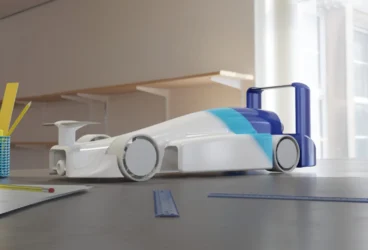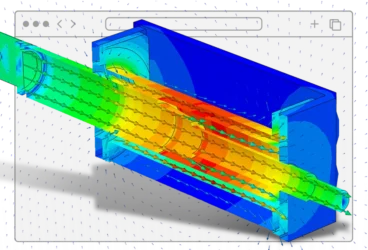In today’s competitive economy, high-quality, innovative products need to be designed and brought to the market in a fast and cost-effective way. In order to ensure this, a finely tuned product development process is indispensable. In that regard, organizations face a choice between investing in one of the following three options:
- Physical prototyping
- In-house engineering simulation
- External engineering consulting services
Before the emergence of simulation technology, engineers were forced to largely rely on physical testing. It is, however, highly expensive, time-consuming, prone to errors, and not scalable. This has led many engineering companies to adopt simulation technology as an integral part of their design process, complementing or even replacing physical tests. The potential returns on this investment are numerous, including a shorter time-to-market, fewer prototype iterations, and reduced costs for software, training, and equipment.
But as more and more companies embrace engineering simulation, they need to carefully consider what resources they have in-house, and what they may need to outsource to an external engineering consultant to make the most of it. While each organization’s situation is unique, let’s look at the most important factors you need to consider before choosing to buy the simulation software or using engineering consulting services.
Simulating In-House

There are many reasons why you might want to keep your design validation process in-house. Intuitive user interfaces, intelligent prompting capabilities, and abundantly available learning resources have made simulation software easier to learn and use, even for beginners. With the learning curve being lowered every year, more and more engineering companies opt for purchasing and learning the software and making it an essential tool for their in-house product development process, without having to use external engineering consulting services. If you deal with multiple design projects a year, investing in the simulation software and necessary training for the in-house staff would be the sensible choice, allowing you to keep the costs under control while accumulating knowledge and experience.
Download this free case study to learn how the SimScale cloud-based CFD platform was used to investigate a ducting system and optimize its performance.
Why Companies Choose In-House Simulation
- In-house engineers have a deeper understanding of different design components and the material properties of their products.
- Costs are limited to the software and salary of current employees, and the ROI on the investment increases with each subsequent project.
- Completed calculations and simulations can be accumulated and repurposed, adding to the core competency of the engineering team.
If this sounds like the right option for you, you can get started with simulation right away using SimScale. Our free interactive online workshops, tutorials, and simulation templates, as well as our live support chat, are here to help you make the most of the software.
Using External Engineering Consulting Services

What if your in-house engineering team is too small and doesn’t have the time to learn the software? Or perhaps you only need to use CFD or FEA simulation for an isolated project and will not have any use for it afterward. As today’s engineering products are becoming increasingly complex, many companies find that they lack the resources and expertise in-house to solve all the design engineering problems that may arise.
These challenges lead many enterprises to seek external support from an engineering consultant with in-depth knowledge of their industry and the expertise necessary to fully leverage the simulation software. An external consultant can take your product design and validation process to the next level, maximizing the software’s effectiveness.
Why Companies Choose to Hire an Engineering Consultant
- Involving outside experts provides a fresh look at the design and can lead to unexpected new insights.
- Engineering consultants are specialized in numerical analysis; their accumulated knowledge and experience allows them to intuitively assess the accuracy of simulation results and spot potential errors.
- It may be cheaper than investing in simulation software and training, or hiring additional employees, especially if such expertise is not needed on a regular basis.
These and the many other benefits of outsourcing their engineering simulation projects drive many companies to hire an experienced engineering consultant. This consultant can be fully dedicated to delivering a reliable solution without burdening the in-house engineering team.
Understanding the Costs and Benefits of Engineering Simulation is Key
Engineering simulation enables designers to get a deep insight into the performance of their product and evaluate countless design iterations, reducing costs and time to market as a result. But in order to tap into the full potential of the technology, a detailed cost-benefit analysis is necessary. An accurate evaluation of in-house resources and the nature of the design project would allow the manager to make an informed decision on whether to invest in the simulation software and training or external engineering consulting services.
And while there is no one-fits-all solution, one thing is clear—the ability to virtually compare design variations, perform “what-if” studies and identify flaws early in the process all contribute to a better, more reliable product while reducing costs and time to market.
If you enjoyed this article, check out the SimScale blog for much more!



